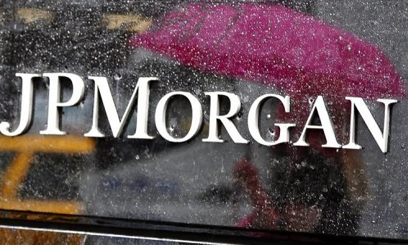NEW YORK, Dec 11- In publicly declaring that JPMorgan Chase should raise $22 billion, the Federal Reserve has delivered a hard blow to the largest US bank and shown its preference for traditional banks.
The central bank unveiled Tuesday a new, tougher capital rule for eight big US banks considered systemically important, including JPMorgan, Goldman Sachs, Morgan Stanley, Bank of America, Citigroup and Wells Fargo.
Those financial institutions, which have raised billions of dollars since the 2008 financial crisis to buttress their solvency, now must have an additional capital buffer of between one percent and 4.5 percent of risk-weighted assets by 2019.
The cushion would allow the banks to absorb major losses and be less likely to turn to taxpayers for rescue.
JPMorgan, the biggest US bank by assets with a complex range of businesses, from commercial banking to investment banking and financial services, will be the most affected in view of its size, according to the Fed.
“It’s reasonable” to expect that JPMorgan’s capital ratio will rise to 11.5 percent, the bank’s chief financial officer, Marianne Lake, said Wednesday at a finance conference in New York.
JPMorgan currently has $163 billion, or a capital ratio of 10.1 percent, according to analysts. To meet the new rule’s requirement, the Wall Street bank run by Jamie Dimon, one of the world’s best-known bankers, needs to raise a little more than $22 billion.
According to people close to the company, JPMorgan was not planning a capital increase but was mulling other options, and should be in compliance in two and a half years.
One of the approaches could be to siphon money from its big earnings, according to RBC Capital Markets, which estimates the bank will average $23 billion in annual profits over the 2015-2019 period.
But tapping earnings more to strengthen its capital base could mean a hit on shareholders, said RBC. “The bigger challenge for the company will be driving its reported and tangible return on equity to higher levels.”
– Short term funding under attack –
JPMorgan is especially in the crosshairs of bank regulators because it relies more heavily than other banks on short-term borrowings to fund profitable businesses. The worry is that big banks will weaken when such funding is withdrawn in a crisis like in 2008.
The object of the rule is to “encourage such firms to reduce their systemic footprint and lessen the threat that their failure could pose to overall financial stability,” said Fed Chair Janet Yellen.
“This latest regulatory blow to JPMorgan is about relying less on short-term funding to finance banking and securities activities,” said Jeremy Hill of Old Blackheath Companies.
But the new rule would arguably make the US banks less competitive than their European counterparts, who would have a capital ratio of 7.0 percent under the Basel III banking standards.
“Holding US banks to a more stringent capital framework than our global competitors could be a misguided economic decision,” said Richard Foster of lobby group Financial Services Roundtable.
The rule is a brake on growth for the major financial institutions, an official of a big bank told AFP. Another said it would hamper certain businesses, like stockbroking.
But the Fed seems to be favoring the traditional model for commercial banks that essentially finance the economy, like Wells Fargo.
The California based bank provides one in three home mortgages in the United States and has few volatile and risky activities.
Wells Fargo finances itself through customer deposits, which assures stability, and it has become a star on Wall Street, where it recently became the highest capitalized bank in history.


































